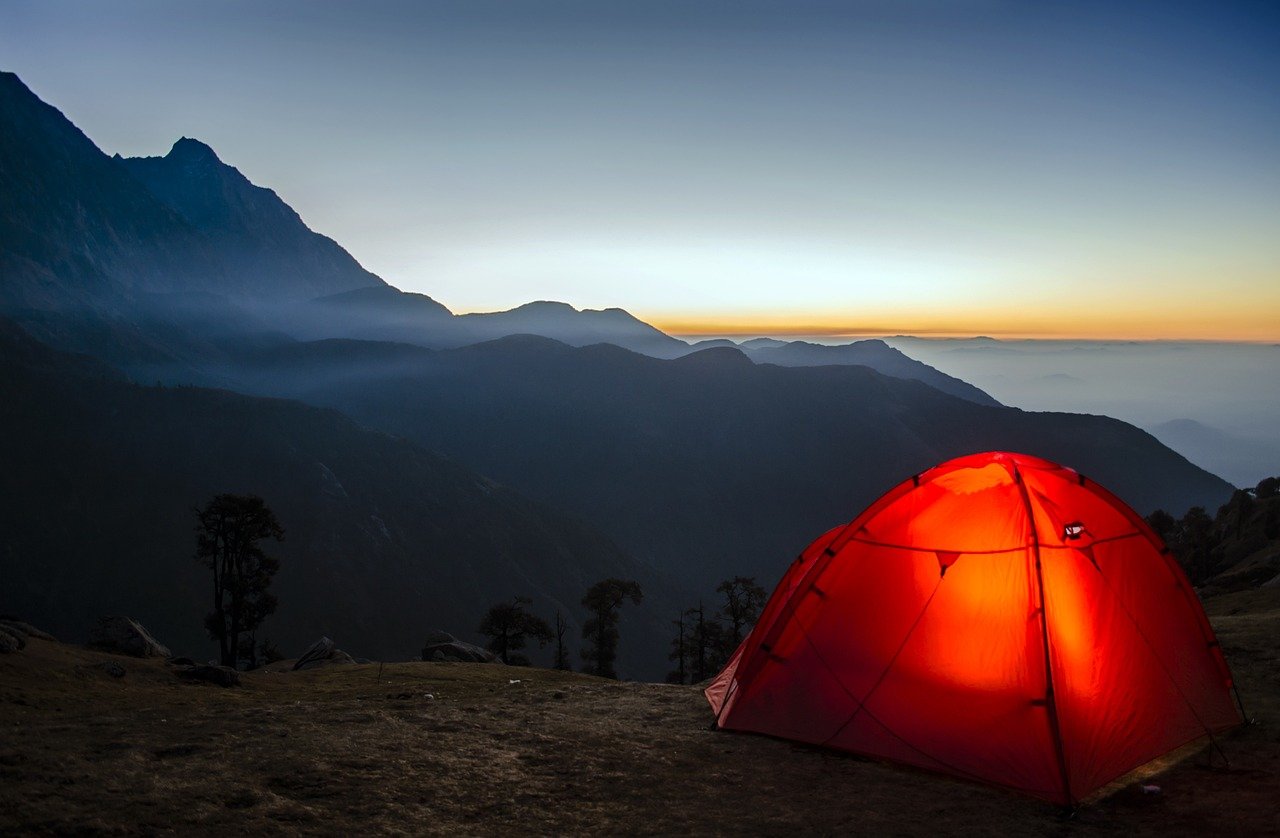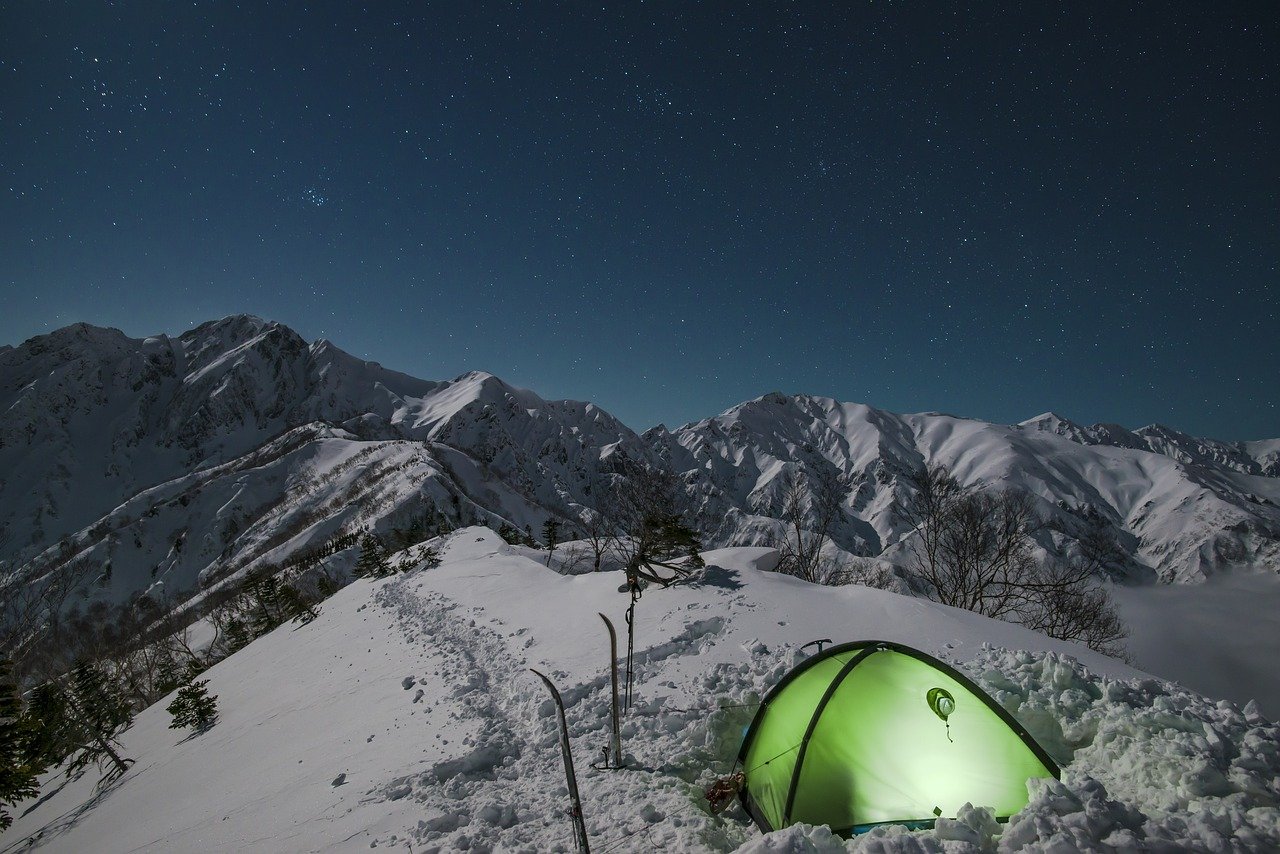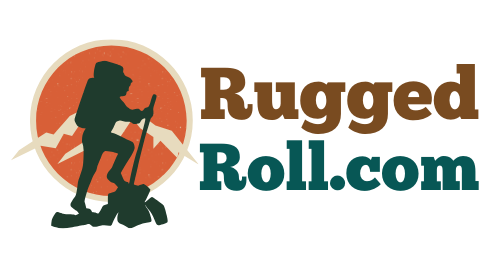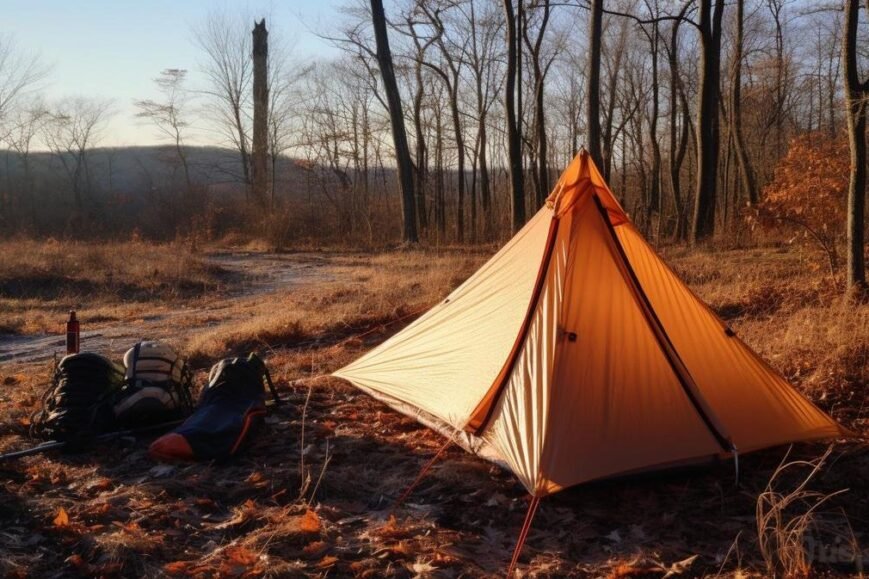- Ultralight backpacking tents must be lightweight, durable, and waterproof with high-tech fabric materials.
- Solo tents are best for individual hikers, two-person tents for shared gear weight, and three-person tents for more space at the cost of extra weight.
- Freestanding tents are easy to set up on any ground while trekking pole tents are lighter and pack smaller.
- Choose a four-season tent for winter or high mountains, otherwise a three-season tent for most conditions.
- Essential accessories include appropriate stakes, a footprint, and careful packing for ease of carrying.
- Proper setup and maintenance extend a tent’s life and improve the camping experience.
- Innovative tent designs focus on minimal weight, and space efficiency, and use trekking poles for support.
- Optimize pack weight by choosing an ultralight tent that fits trip needs without excess cost and pack smart.
- Quality ultralight tents can handle various weather conditions with the right features for ventilation and resistance.
- Sustainability is important; choose tents made from recycled materials and with eco-friendly certifications to protect the environment.
Ready to shave pounds off your pack weight and hike farther? Ultralight backpacking tents may be your answer. These tents make your trek less burdensome. So, what makes them tick? I’ll guide you through picking the lightest, toughest, and driest options. Let’s dive into what really matters in an ultralight tent and if they are up to the hype. Keep reading and learn how to choose smart and pack light!
What Are the Key Features to Look for in Ultralight Backpacking Tents?
When hunting for the best ultralight backpacking tents, tent weight is key. A light tent makes your hike easier. Yes, the weight of your tent is crucial while backpacking. Less weight means you can move faster and farther with less effort.
But don’t forget about durability. A tent that’s light but breaks easily is no good. You need to find a balance. Durable ultralight tents exist that won’t tear after a few uses.
Waterproofing is just as important. Getting wet can ruin your trip. Ultralight tents should keep you dry. Waterproof backpacking tents protect you from rain, ensuring a comfortable rest.
Fabrics matter a lot too. Ultralight tent fabrics make all the difference. They need to be lightweight and strong. Often, they’re made from high-tech materials that withstand the elements without the bulk.
Look for features that truly make it ‘ultralight’. These include minimal poles, thin yet strong fabrics, and smart design. Every ounce counts when you’re carrying your home on your back. Design traits in ultralight tents aim to cut weight without cutting corners on comfort and safety.

How to Choose Between Solo, Two-Person, or Three-Person Ultralight Tents?
Solo backpacking tents suit hikers who trek alone. They are light and easy to set up. Two-person hiking tents work well for those who share gear weight with a friend. They offer comfort with little extra weight. Three-person trail shelters fit small groups but are heavier.
When deciding on an ultralight tent, consider this: a solo tent provides a snug space for one person and gear. It’s perfect for solo missions where every ounce counts. Our top picks for solo tents blend lightness with durability.
Two-person tents mix comfort with low weight. They are ideal if you want to hike with a buddy without carrying too much. These tents provide just enough room for two people to rest after a long day on the trails.
Three-person shelters give more space, but remember, more space means more weight. It’s a trade-off: carry less and hug your gear, or lug more and lounge in style. Opt for a three-person tent if you crave elbow room and are okay with a bit more bulk.
Now, what about comparing tents? Look at their space-to-weight ratio. You want a tent that won’t break your back but still lets you stretch out. The best tent for you balances these factors according to your adventure goals. Remember, the right choice is the one that fits your needs on the trail.
Why Should You Consider a Freestanding Tent and What Are Trekking Pole Tents?
Let’s talk about freestanding lightweight tents. They stand tall without help from stakes. This means you can move them around easily without taking them down. You can also set them up on hard grounds where stakes can’t go in. Plus, their setup is usually quick, saving you precious time when you’re eager to rest.
But there are also trekking pole tents—they use your hiking poles for support. These tents cut down on extra weight since they don’t bring poles of their own. They connect with nature more, using what you have on hand. And they often pack down smaller, leaving more room in your backpack for other gear.
When comparing setup times, freestanding tents often win. You just pop them open, stake if needed, and voila! You’re done. Trekking pole tents need more skill. You must angle the poles right and tension the lines just so. It can take a few tries to get the hang of it.
The ground can make or break your tent setup. On rocky or wooden areas, freestanding tents shine. They can sit on any surface. Trekking pole tents need soft ground for stakes. Without good soil, they can flop and won’t shield you well.
Whether you pick the quick-setup freestanding tent or the compact trekking pole tent, think about where you’ll be camping. Your choice can turn a good night’s sleep into a great one under the stars.
How Can Season and Environment Affect Your Ultralight Tent Choice?
When picking out an ultralight tent, seasons matter a lot. Do you need a four-season or a three-season tent? Well, if you plan to camp in cold, snowy conditions, go for a four-season tent. They’re built stronger to handle wind and heavy snow. But, they might be too warm for summer.
Now, let’s think about the place you will camp. Will it be wet, windy, or super cold? For harsh weather, your tent should be tough. Look for features like strong poles and tough fabric. This will help you stay safe and dry in storms or heavy winds.
Remember, heavy tents are hard to carry. So, you want one that’s light but can still stand up to the weather. You don’t want a tent that is too light but can’t handle a storm. It’s about finding the right balance.
Before you buy, think about when and where you’ll use it. Your choice should fit the season and your trip’s setting. For most trips, a good three-season tent works well. It’s light, easy to carry, and fine for spring, summer, and fall. Only pick a four-season tent for winter treks or high mountains.
In the end, the best tent is one that suits the weather and feels right for you. Choose wisely and it will be a cozy home away from home on your adventures.

Which Tent Accessories Are Essential for Ultralight Backpacking?
When packing light, every ounce counts. Stakes are important but know when ultralight is right. Tall grass or soft soil? Go ultralight. Camping in ice or strong winds? Choose heavier, tougher stakes to pin down your tent securely.
A footprint or ground cloth can save your tent’s life. Think it’s extra weight? Not so fast. It stops water and sharp rocks from tearing your tent’s bottom. It’s the unsung hero that keeps your tent dry and lasts longer. Pick one up, especially for rough ground.
Thinking of packing a tent? Roll it tight. Use your knees to push air out and straps to keep it snug. Pack the poles and stakes on the sides. They’ll act like a frame, giving structure to your backpack. It makes carrying your load easier on your back.
Lastly, some choose to ditch extras like guy lines or gear lofts. They make your setup simpler and lighter. Want to cut more weight? Try using objects you have. Hiking poles can work as tent poles. Your creativity is the limit.
So there you have it. Go light but be smart. Pick the right stakes, don’t skip the footprint, roll your tent tight, and think outside the box for substitute gear. Happy trails!
How Does Tent Setup and Maintenance Impact Your Backpacking Experience?
Setting up your tent right matters. It gives you a safe spot to rest. Taking care of your hiking tent makes it last longer. Doing seam sealing and repairs on the trail keeps you dry. Tents with easy design features save time and stress.
Let’s get deeper into why these things matter. When you have a good tent setup guide, you avoid trouble later. No one likes a tent that falls over at night. Learning to set up your tent fast means more time to enjoy the wild.
Tent care is just as key. Clean and dry it after each trip. Check for holes or tears. Fix them before your next adventure. Seam sealing stops leaks. It’s like giving your tent a shield against rain.
Think about this: A tent is your home out in nature. Just like your house, it needs love and care. You wouldn’t leave a hole in your roof at home. Don’t ignore one in your tent either.
A well-kept tent means less worry. It means more time looking at the stars, not fixing leaks. Choose a tent that’s a snap to set up and care for. You’ll thank yourself when you’re out in the woods.

What Are the Most Innovative Designs in Ultralight Tents Today?
The best ultralight backpacking tents combine light weight with a spacious interior and smart closure systems. To be top-rated, a tent must be light yet sturdy. It also needs to offer a good space-to-weight ratio. This means lots of room without heavy materials.
Award-winning tent designs stand out by using the newest tech. They are often made with ultra-light fabrics and have features that are both clever and functional. Some have doors that roll away neatly. Others use magnets or high-tech zippers for a secure but easy-to-use closure.
One example of an innovative design is the “floating” tent floor. It can adjust to uneven ground, giving you a flat space to sleep. Another is a dual-wall that cuts down on condensation. These walls can keep you dry in wet weather.
Designers of ultralight tents also think of wind when they make their products. They add things like carefully placed guy-out points. These features help the tent stand strong in storms. They save weight by making these points dual-purpose, often also serving as vents.
Lastly, some tents ditch traditional poles. They use trekking poles instead. This idea is brilliant, as it cuts down on what you carry. It also makes these tents some of the lightest to carry on long trips into the wild.
In summary, when you pick out a tent, look for light materials. Make sure there is enough room. Check that it has closures that work in all weather. And don’t forget to consider new designs, like those that work with trekking poles for support.
How to Optimize Your Pack Weight With the Right Ultralight Tent?
Tents come in weights like heavy, light, and ultralight. For hikes, less weight means more fun. To pick the best tent for you, think about your trip. A short trip? Less weight matters less. A big hike? Go light.
To keep your whole pack light, start with the tent. It’s often the heaviest thing we carry. Less weight on your back means you can move faster and easier. So find a tent that’s light but still does what you need.
Some tents are light and save you money too. That means you can hike light without spending lots of cash. Some tents don’t cost much but are still pretty light. They might be less tough or less fancy. But they still get the job done.
Pack things right and you can take a good tent without it feeling heavy. Use lightweight bags. Put things inside your tent while you carry it. This way, you make the most of every inch in your pack. It’s like a puzzle. The pieces should fit just right. This way, you hike without extra weight.
Tents hold a big place in our packs and our hikes. Picking the right one makes every step better. A light tent that’s not so pricey and still tough is the sweet spot. Then, pack it well, and you’re set for a great time on the trails.
Can You Rely on Ultralight Tents in Different Weather Conditions?
Yes, you can count on ultralight tents in various weather. Modern tents use strong waterproof tech. They keep you dry, even in heavy rain. Quality tents also have good features for air to flow. This keeps the inside from getting too wet from your breath.
But tents must also work in wind, snow, and heat. For this, they have stuff like vents and tough fabrics. Some ultralight tents can even face extreme weather. They have designs that stop the wind and shed snow well.
People take these tents to cold mountains and hot deserts. They trust them to keep them safe and comfy. When it gets really cold, tents made for all seasons can help a lot. But remember, not all light tents are for winter. Some are just for warmer times.
When picking a tent, think about the weather you will face. If it’s going to be mixed, choose a tent with good airflow and water protection. For harsh spots, go for a tent made for that challenge. Always check what season the tent is for. This info will help you stay warm and dry on your trip.

Why Should Sustainability Be a Consideration When Picking an Ultralight Tent?
Eco-friendly tents matter a lot. They keep nature clean and wild places safe. By choosing tents made with sustainable materials, we can help protect our planet. These materials cause less harm to the environment during production. So, when you pick an ultralight tent, go for one with eco-friendly stuff.
Why does it matter? Tent sustainability is key for a healthy earth. Most tents come from plastic stuff, like nylon or polyester. Making these can harm the air, land, and water. If we choose tents that use eco-friendly materials, we make less trash and pollution. Plus, taking care of nature is why we camp, right?
What should you choose? You should look for tents that use materials like recycled fabrics. They give a second life to plastic waste. Also, some tents use dyes that don’t pollute. This way, when you camp, you leave only footprints behind.
Certification also tells you if a tent is good for the earth. Look for labels like the Global Recycled Standard. These make sure your tent meets top green standards. If you buy these, you know you’re doing your part for our planet.
Finally, remember when we buy tents that last, we make less trash. This means less stuff thrown away. It also means wild places stay wild. And that’s a win for everyone who loves the outdoors. So, check what your tent is made of before you buy it. Go green, and keep your adventures clean!
Conclusion
We’ve covered key points in choosing ultralight backpacking tents. Think about weight, durability, and the weather when picking your tent. Look for tough yet light fabrics. Decide if you need a solo, two-person, or bigger tent. Remember, freestanding tents set up fast, but trekking pole tents have their perks too. Match your tent to the season and keep it light with essential accessories. Maintenance is easy if you choose the right design and pack smart. The latest tents are innovative and cool. And yes, they can stand up to wild weather if you choose well. Always pick tents that are kind to nature. Now, get out there and enjoy your adventures with the right tent!
![]()

